
The marine environment
What is the marine ecosystem like near Antarctica? Why are the surrounding seas so much more productive than the Antarctic terrestrial ecosystems? How have organisms adapted to living in the cold Southern Ocean?
Warm up
Ecology of the Southern Ocean
The contrast in life between the continent and the Southern Ocean is amazing: the largest land animal supported by the terrestrial ecosystem is the midge; whereas Blue Whales, the largest animals on the planet, are found in the surrounding seas. Even though seals and penguins spend some of their time out of the water, they too rely entirely on the sea for their food supply and are therefore part of the marine ecosystem.
This section looks at the ecology of the Southern Ocean in terms of its productivity, its various types of plants and animals, and the feeding relationships that exist between these organisms. As described further in The coast and adjacent ocean, the Southern Ocean extends from Antarctica’s coastline to the Antarctic Polar Front – a transition zone that separates the cold waters surrounding Antarctica from the relatively warmer waters of the South Atlantic, Pacific and Indian Oceans. The sea surface temperature of the Southern Ocean ranges from as low as -1.8°C near the Antarctic coast to about 3.5°C at the polar front.
Despite the cold water, the Southern Ocean is one of the more productive parts of the world ocean. In fact, it may seem something of a paradox that, as far as the oceans are concerned, biologically rich areas tend to be found where waters are cold rather than warm. This is opposite to the usual pattern on land in which terrestrial ecosystems are most productive where temperatures are higher (compare for example tropical rainforest with arctic tundra). Even though chemical reactions and metabolic rates are slower where it is colder, the major limiting factor for marine productivity is not temperature but nutrient availability.
Therefore, in order to understand why the Southern Ocean is productive, it is necessary to take a look at the physical processes that cause nutrients to be abundant. In turn, nutrient abundance stimulates the growth of phytoplankton which then supports the rest of the marine food web. Phytoplankton, described in more detail below, are floating micro-organisms that make their own food through photosynthesis. They are the autotrophs (producer organisms) of the marine ecosystem.
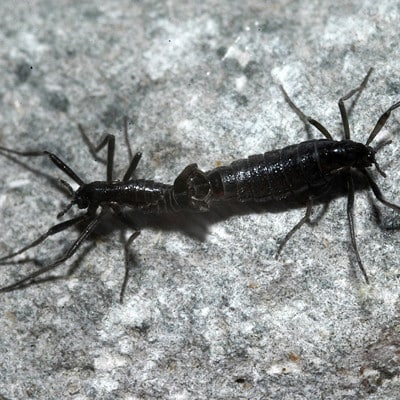
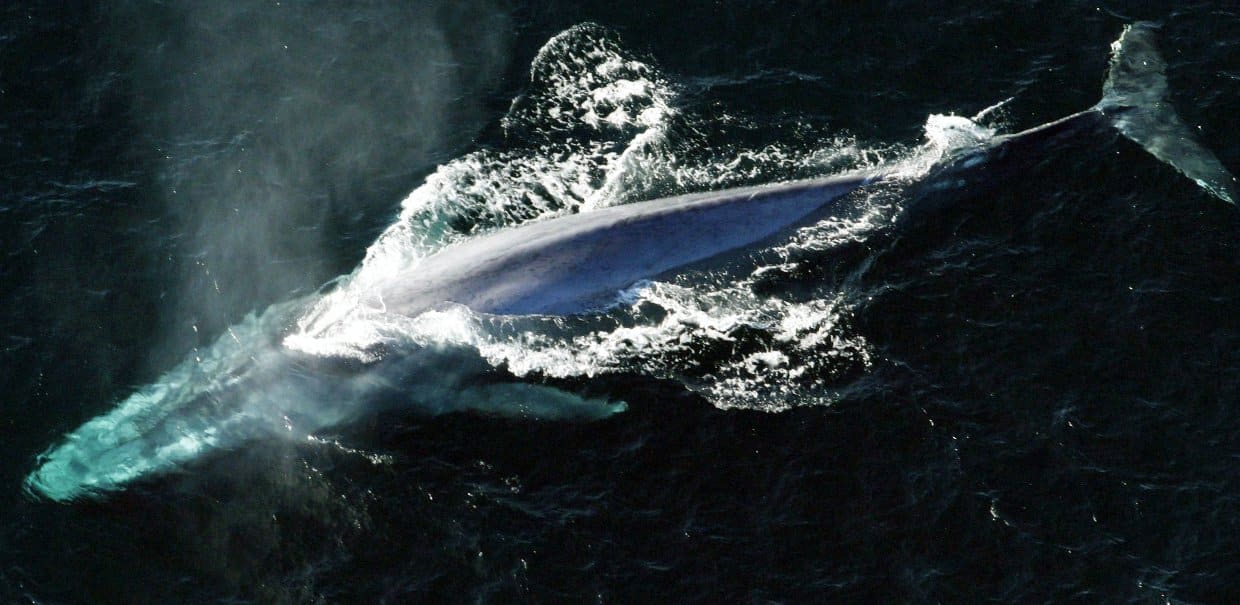
Cold facts
Reasons for nutrient abundance in the Southern Ocean
As described in the previous section, photosynthesis requires sunlight, water and carbon dioxide; however, macro-nutrients (needed in large quantities such as nitrogen, phosphorus, and silica) and micro-nutrients (needed in trace quantities such as iron) are also required for growth and to maintain life functions. If nutrients are in short supply, then gross primary productivity (GPP) by phytoplankton will be limited. This is the case in warm, tropical seas: due to the warm sea surface temperature, the water column is stratified and deep water (which is colder and more dense) cannot rise to the surface to bring up nutrients from depth. Instead, any nutrients that are deposited on the sea surface (from airborne dust coming off of continents) are quickly used up and/or settle down to the sea floor where they become unavailable to phytoplankton.
Nutrient rich and productive areas of the world ocean occur where there is upwelling of deepwater, thereby bringing nutrients upwards and concentrating them in the near surface zone where phytoplankton can photosynthesise. This is within a few metres depth of the sea surface where enough light for photosynthesis can penetrate into the water column (the euphotic zone). Upwelling occurs in various parts of the oceans for different reasons; but in the Southern Ocean upwelling is connected to the seasonal formation and melting of sea ice. This causes the ocean to ‘overturn’ in the following way:
-
As sea ice forms some salt is expelled into the surrounding water.
-
This increases the salinity of the sea water around the sea ice, causing it to become more densethan surrounding water.
-
This salinity driven increase in density is also aided by the cooling to subzero temperatures of the surface water (saline water has a lower freezing point than freshwater).
-
As the very cold and saline water sinks, it is replaced at the surface by water from deeper in the ocean that is less dense and a little warmer.
-
Since some of the excess salt produced during sea ice formation is held in pores spaces inside the sea ice, the process continues in the spring and summer when meltwater ponds on the surface of the sea ice drain through the ice, thereby washing out the salts.
In summary, this process of ‘brine rejection’ from sea ice causes the exchange between surface and deepwater that keeps the surface of the Southern Ocean supplied with nutrients. This is also linked to the formation of Antarctic Bottom Water – the deepwater current which is part of the ‘global ocean conveyor’ system as described in The coast and adjacent ocean and helps in the transfer of heat from low to high latitudes.
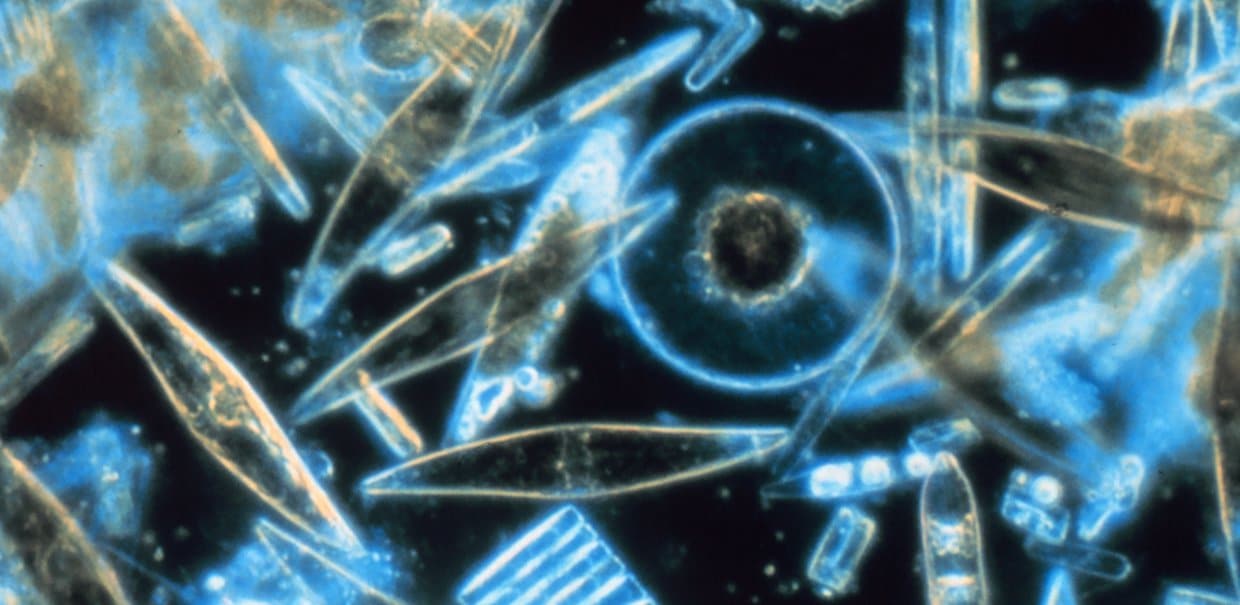

Phytoplankton
With abundant nutrients in the Southern Ocean, phytoplankton productivity can reach high levels when there is sufficient light during the summer season. The term phytoplankton comes from Greek to refer to plants that drift; however, in contrast with the more familiar land plants, phytoplankton are micro-organisms that are usually too small to be viewed without a microscope. Although individually small, the total biomass of phytoplankton in the world ocean is huge and accounts for roughly half of all global photosynthesis (and of course oxygen production). A single litre of sea water can contain over a million phytoplankton. Some of the principal types include cyanobacteria, diatoms, dinoflagellates, and coccolithophorids. There are around 5000 different species of marine phytoplankton. The general term plankton refers to all of the marine organisms that are not free-swimming, but drift with ocean currents.
You can learn more about phytoplankton by visiting the following websites:
Because they contain chlorophyll, the pigment used by plants to absorb light for photosynthesis, satellite imagery can be used to detect phytoplankton blooms and to map their distribution – in simple terms more phytoplankton means more chlorophyll giving the ocean surface a greener colour. The Sea-viewing Wide Field-of-view Sensor (SeaWiFS) project uses satellites to continuously monitor the abundance of various types of phytoplankton throughout the world’s oceans, and this is important for assessing the health of marine ecosystems as well as for studying the role of the world’s ocean in the global carbon cycle.
-
You can learn more about the SeaWiFS project by visiting: NASA Oceancolor: SeaWiFS Project Information
-
You can look at satellite images (including animations) showing the distribution of phytoplankton productivity by visiting: NASA Earth Observatory: Global maps
The image below left uses ‘false colour’ coding to show the quantity of marine chlorophyll. It shows areas of relatively high abundance in the seas surrounding Antarctica in yellow and green.
Satellite photographs using visible light can show the location of individual phytoplankton blooms, such as this coccolithophore bloom in the picture below right, that gives the sea surface a turquoise colour.


Although there is considerable variation in productivity throughout the Southern Ocean (and throughout the year) on average roughly 50 tonnes of carbon is fixed per 100km2 of sea by phytoplankton. The location of productivity shifts during the year depending on the distribution of sea ice. As sea ice retreats in summer, centres of productivity move closer to the continent; and, polynyas formed during melting (gaps of open water within sea ice) create highly productive areas. During the winter, algae become frozen in and beneath the ice. As soon as the ice melts (and light becomes available) in the spring or summer, they are released into the surface waters where they can bloom.
Unlike most other ocean areas, macro-nutrients tend not to be completely depleted in the surface zone during the period of phytoplankton growth. This is primarily due to limitation of the micro-nutrient iron. If iron were more abundant in the Southern Ocean, then phytoplankton production would be even higher. Because of the relatively high ratio of macro-nutrients to phytoplankton abundance, the Southern Ocean is referred to as a ‘high nutrient – low chlorophyll environment’ (abbreviated HNLC). In the world ocean it is the largest HNLC region.
The Southern Ocean food web
For the study of food chains and food webs in general, the Southern Ocean makes an excellent case-study: the feeding relationships are relatively simple, the diversity of species is not particularly high compared with other ecosystems, and some food chains consist of few trophic levels. In fact, some of the food transfers are remarkably short. For example, there is just one link between the filter feeding whales (baleen whales) and the phytoplankton – krill.
When examining the feeding relationships within an ecosystem, it is important to be aware of the distinction between a food chain and a food web. The former refers to the linear transfer of energy (in the form of food) from the autotroph, through the primary consumer, secondary consumer, and perhaps tertiary consumer. Using the previous example of baleen whales, the food chain simply consists of phytoplankton → krill → whale: three types of organisms representing three different trophic levels. Within the Southern Ocean ecosystem, another chain involves phytoplankton → protozoa → krill → fish → penguin → killer whale. To complicate matters, some organisms may feed at different levels along the chain, such as penguins which eat both fish and krill. The food web, therefore, is a way of depicting the multiple food chains that exist within an ecosystem and the complex interrelationships between different organisms, some of which occupy different positions on the trophic ladder in different food chains.
-
You can learn more about marine ecosystem food webs in general by visiting: Classroom@Sea: Marine Food Webs
-
For an introduction to the main types of organisms in the Southern Ocean you can explore the section on ‘Beneath the Waves’ in the main site: Beneath the waves
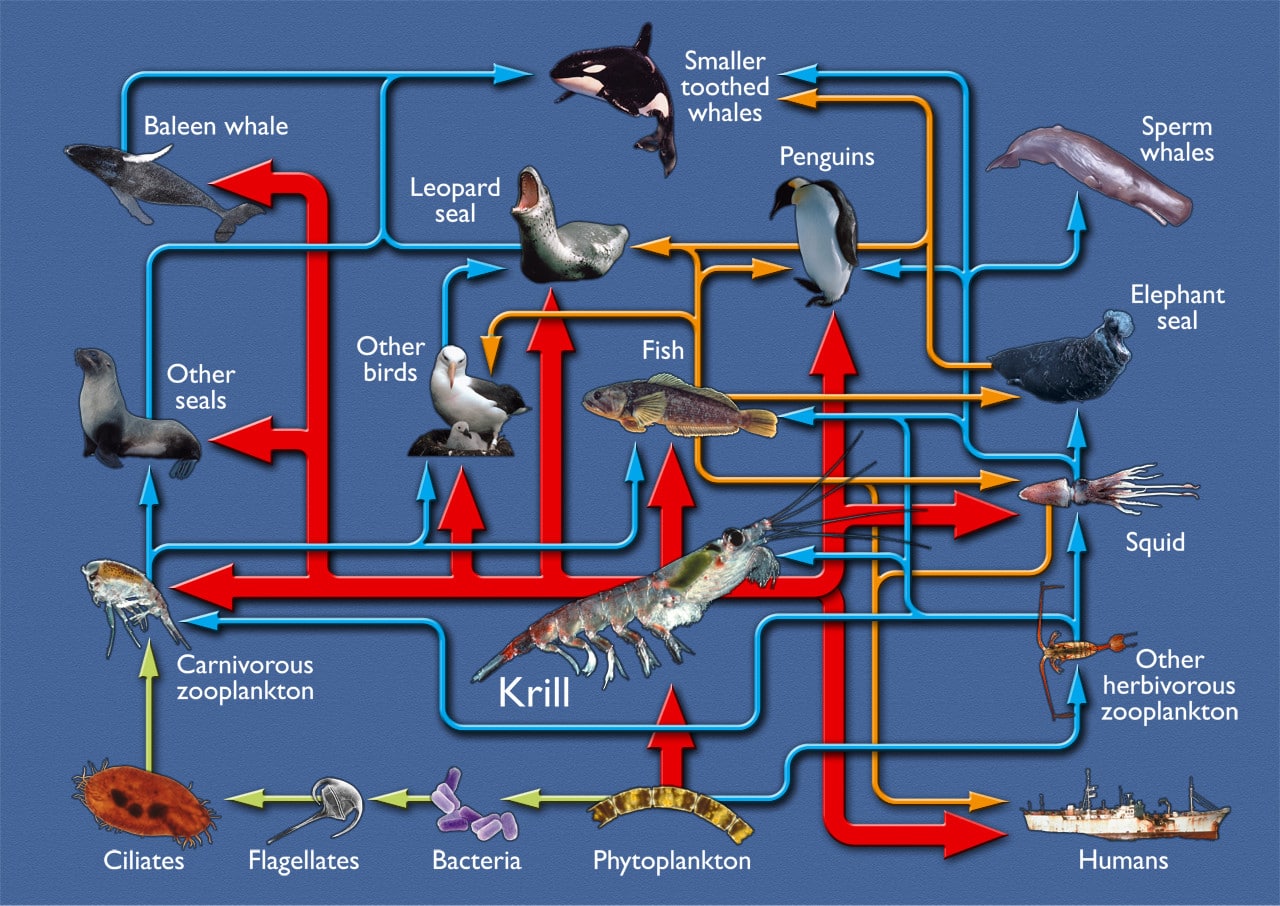
The phytoplankton underpin the food web by fixing the energy from the Sun into chemical energy. Although much of their biomass is consumed by pelagic organisms shown in the diagram, some sinks down to the bottom of the ocean providing sustenance for benthic (bottom dwelling) organisms and the rest simply accumulates on the sea floor. As this happens, the carbon that was fixed through photosynthesis becomes part of the marine sediment. This is an important part of the global carbon cycle, sometimes referred to as the ‘biological pump’ which transfers carbon from the atmosphere into long-term storage in rock. In this way, the Southern Ocean is an important ‘sink’ for atmospheric carbon dioxide.
The main consumers of phytoplankton in the Southern Ocean are zooplankton (consumer micro-organisms such as protozoans) and crustaceans such as copepods and krill.
Antarctic krill is a shrimp-like crustacean, measuring about 6cm long, that dominates the primary consumer level in the Southern Ocean ecosystem. Watch krill swim and feed on the “Krill cam“.
Although numbers of krill fluctuate, there are likely to be over 500 million tonnes of krill in the Southern Ocean. They begin their life feeding on algae beneath sea ice (in ‘krill nurseries’) and during the summer they leave the shelter of the ice and form swarms with millions of individuals (sometimes containing over 10 000 individuals per cubic metre of sea water). Krill plays a central role in the ecosystem as a key source of food for many other animals:
-
Fish – E.g. the Antarctic cod.
-
Squid – Very abundant in the Southern Ocean. There are many species of squid and they can range in size from 15cm to over 15m in length.
-
Whales – Baleen whales such as the Blue, Humpback, Fin, and Minke have evolved mouths with fibrous plates instead of teeth that enable them to filter out huge quantities of krill from the ocean. During the main feeding season, a Blue Whale consumes about 3600kg of krill a day!
-
Whereas the Blue Whale is only numbered in the hundreds, the Minke is by far the most abundant of the baleen whales today, with perhaps a million or so in the Southern Ocean.
-
Seals – The Crabeater seal in particular relies almost exclusively on krill. The ‘crab’ in its name comes from the word ‘krebs’ in German which is a general term for crustaceans, not because the seal eats crabs! It is the most abundant species of seal in the world, and consumes more krill than all of the baleen whales put together.
-
Penguins – There are 17 different species of penguin (all in the Southern Hemisphere) but only five breed along the continent and/or the Peninsula (Emperor, Adélie, Gentoo, Chinstrap, Macaroni). In the Antarctic, penguins (especially the Adélie) feed on krill as well as on fish and squid.
In turn, these krill eating animals are the prey for animals higher up the trophic ladder. For example, among other things, Killer whales hunt seals, squids, and penguins; and seabirds (such as the Albatross) hunt fish and squid.
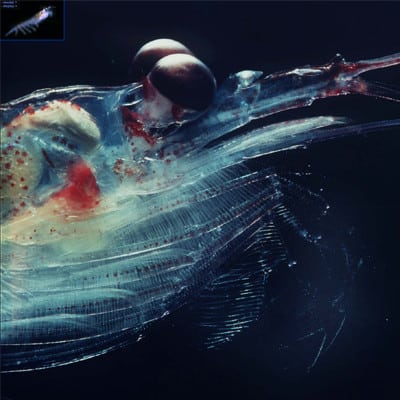
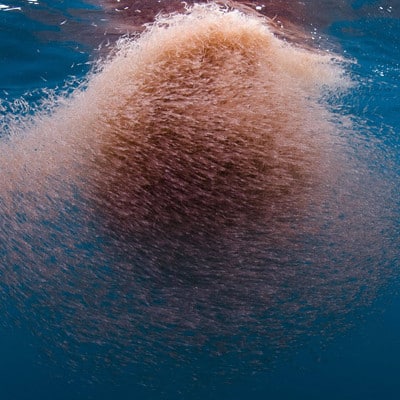

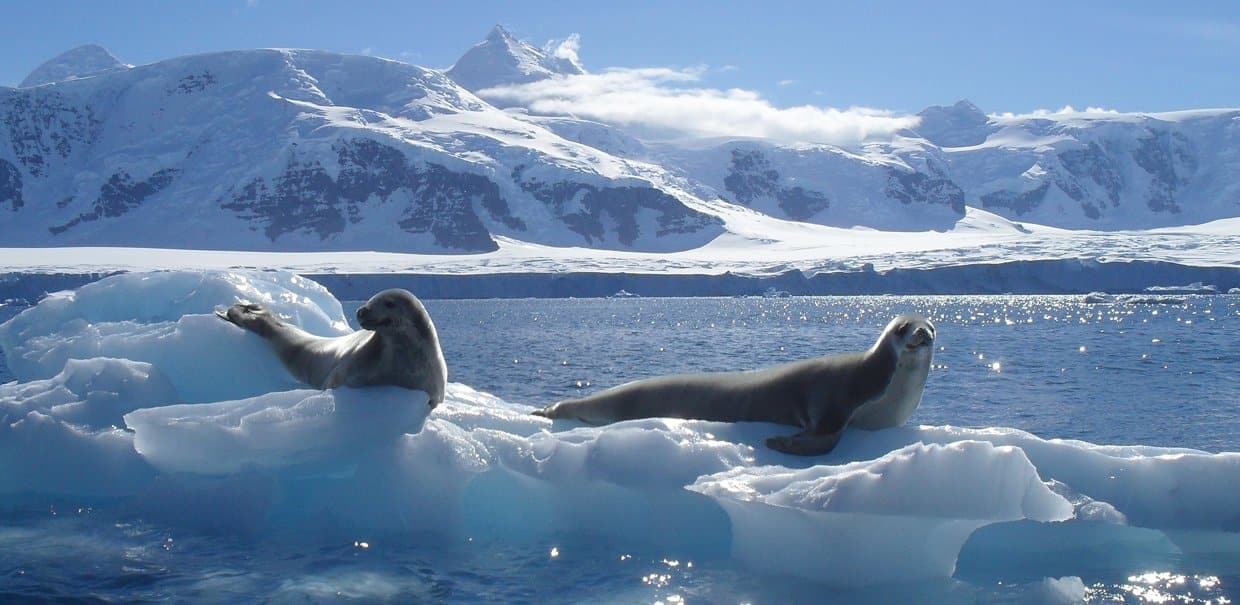
Adaptations
Organisms of the Southern Ocean exhibit a range of adaptations that make them specially suited to the cold waters and extreme seasonality in food supply of this marine environment.
-
Some animals have evolved behaviours that enable them to survive in the Antarctic Circle throughout the year. The Emperor penguins, for example, huddle together on sea ice during the winter, with individuals taking turns to stand at the outer edge of the huddle. These dense groups of penguins leave behind a lot of guano on the ice which can be seen in satellite images and used to help in monitoring the number and size of Emperor penguin colonies.
-
Some animals have adapted their migration patterns around the seasonal productivity of the Southern Ocean. Both whales and seabirds migrate to lower latitudes during the austral winter to breed and return to the Southern Ocean during spring and summer to feed.
-
Marine invertebrates, such as molluscs, have evolved seasonal life cycles in which growth and reproduction occur over a short period during the spring and early summer. Growth rates are generally slower and longevity greater than in other oceans.
-
Warm blooded animals have evolved thick layers of fat (blubber) for insulation. Body shapes have also evolved to minimise the surface to area ratio, thereby reducing heat loss. Penguins also have dense, waterproof plumage. Emperor penguins (below) have the advantage when it’s coldest of large size, which reduces their surface area to body volume ratio).
-
Because cold water contains more dissolved oxygen than warm water, the icefish doesn’t need haemoglobin in its blood (haemoglobin carries oxygen in red blood cells). Uniquely among vertebrates, it has therefore been able to evolve lower viscosity blood that transports oxygen in blood plasma and takes less energy to be pumped through the body. It is clear and translucent in colour. High dissolved oxygen also enables some organisms, particularly cephalopods (squids and octopuses), to grow larger than is possible in other oceans.
-
Both the Antarctic Cod and the Mackerel icefish contain antifreeze proteins in their blood and tissues that prevent their body fluids from freezing.
-
For more information about penguin colonies visit: BAS: Scientists map penguins from space
-
Learn more about the ecosystem of the Southern Ocean: Classroom@Sea: Food webs in Antarctica
You can learn more about the wildlife of the Southern Ocean at the following websites:
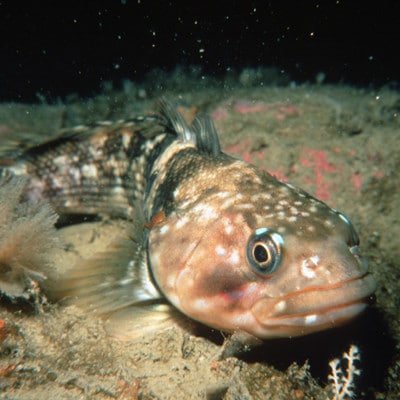

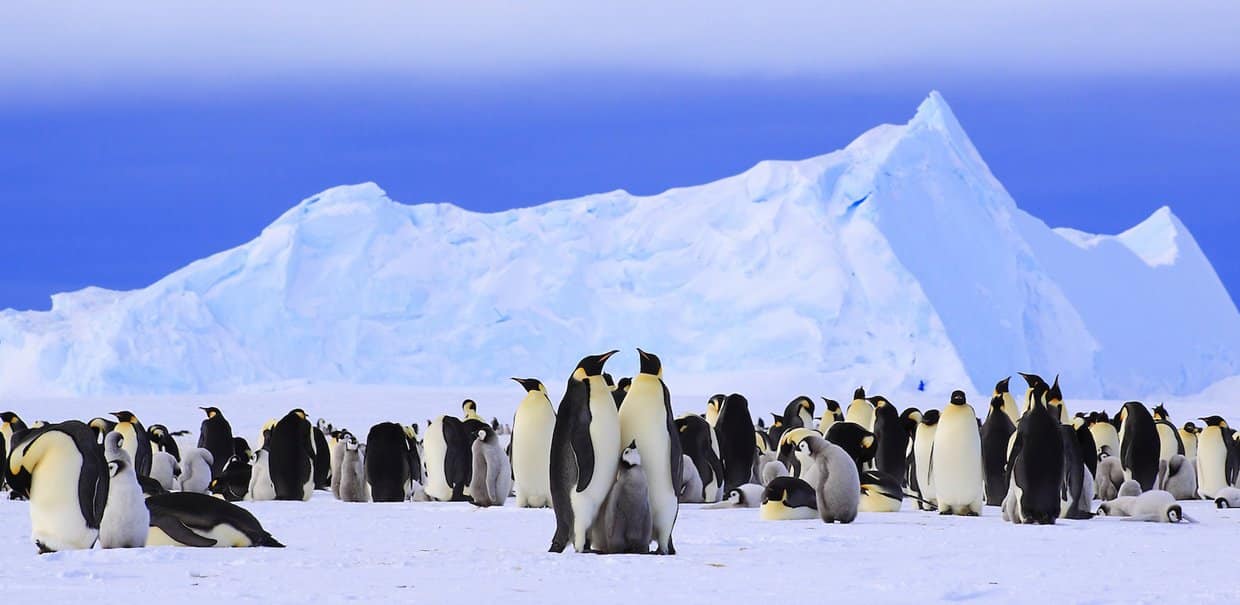
Student activity 1
Visit Nasa’s Earth Observatory website and study the satellite-based maps of ocean chlorophyll concentration. Referring to the text above and the information on the website, write a short essay to describe and explain the global distribution of marine productivity.
Student activity 2
Study the summary diagram of the Southern Ocean food web and write brief answers to the following questions:
-
Why is the simplicity of the Southern Ocean food web an advantage for studying how ecosystems work?
-
Describe how you think the ecosystem would change in response to changes in the abundance of krill.
-
The number of baleen whales was reduced drastically during the 20th century due to the whaling industry. How do you think this reduction in the population of baleen whales affected other animals within the ecosystem?
-
Using examples from the Southern Ocean food web, explain why the biomass of organisms operating at the top of the trophic ladder is always far less than the biomass of producer organisms.
Student activity 3
Choose some examples of animals found around Antarctica that are part of the marine ecosystem and describe the specific adaptations that enable your selected animals to survive in this environment. (Also use the suggested web links above.)
Student activity 4
Using the text and any of the suggested web links above, create a fact file for any group of Southern Ocean organisms of your choice (e.g. penguins, seals, whales, seabirds). Include the names of the different species, their habitats, their life cycles, their food sources, and any threats that they may be facing.







